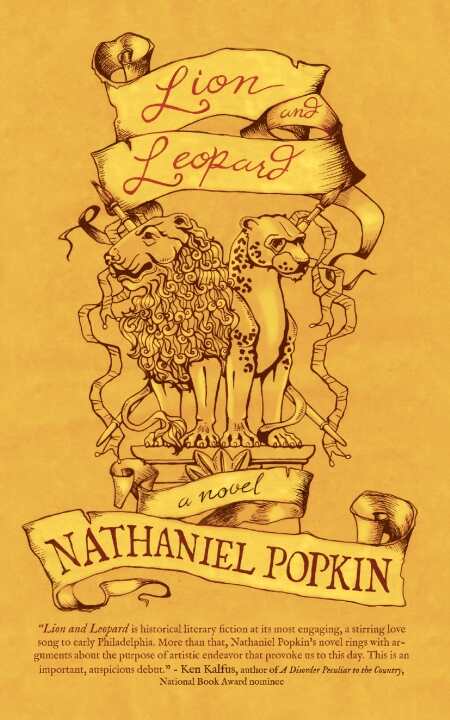Lion and Leopard
- 2013 INDIES Finalist
- Finalist, Historical (Adult Fiction)
Popkin brings alive the individuals who engineered a culture for the new world.
Any history of visual art in America should include a review of Nathaniel Popkin’s Lion and Leopard, a fictionalized account of early-American painters that illuminates brilliantly how building a culture is so much more than building a country.
Popkin focuses on the small circle of painters establishing themselves in the years following the Revolutionary War, predating the American-born masters of the Hudson River School. Paintings during this time were largely landscapes, portraits, or historical scenes meant to secure an artistic identity for America. But how could this identity stand apart from Western Europe, where all new American painters had learned their trade? There is scandal and outrage, betrayal and violence among the small crowd of artists all hoping to be fathers of American art.
Popkin’s story is given voice through the fictional reflections of the artists and their friends, lovers, and enemies—a method that provides an authentic experience of the time. At the outset, Lion and Leopard introduces three young men in their search for “Babylon” in the newly independent country. They are the optimistic revolutionaries looking for truth and beauty. Along the way, as they dig into the connections between John Lewis Krimmel, Charles Willson Peale, Charles Bird King, and others, they decide to commit themselves to creating a book about America’s master painters. Their interviews and conversations illustrate the American consciousness at the time, trying to sort through the egos and recriminations to determine just what it is that makes a painter a “master” and how these men are shaping American art.
The complexity of these men could not be more delicately or fairly revealed than through their own words, as imagined by Popkin. John Krimmel, the German who is labeled by Rembrandt Peale as an “albatross on the American psyche,” is the most polarizing character. His rise and fall illustrates the turning point where American art would transform from simply accepting an iteration of the European style to embracing the self-taught, organic convergence of realism and self-expression.
Popkin has written an engaging and intelligent book which covers so much more than the relationships between a handful of early-American painters. Taking care to speak through his characters in distinct and real voices, he has brought alive the individuals who engineered a culture for the new world.
Reviewed by
Sara Budzik
Disclosure: This article is not an endorsement, but a review. The publisher of this book provided free copies of the book to have their book reviewed by a professional reviewer. No fee was paid by the publisher for this review. Foreword Reviews only recommends books that we love. Foreword Magazine, Inc. is disclosing this in accordance with the Federal Trade Commission’s 16 CFR, Part 255.

